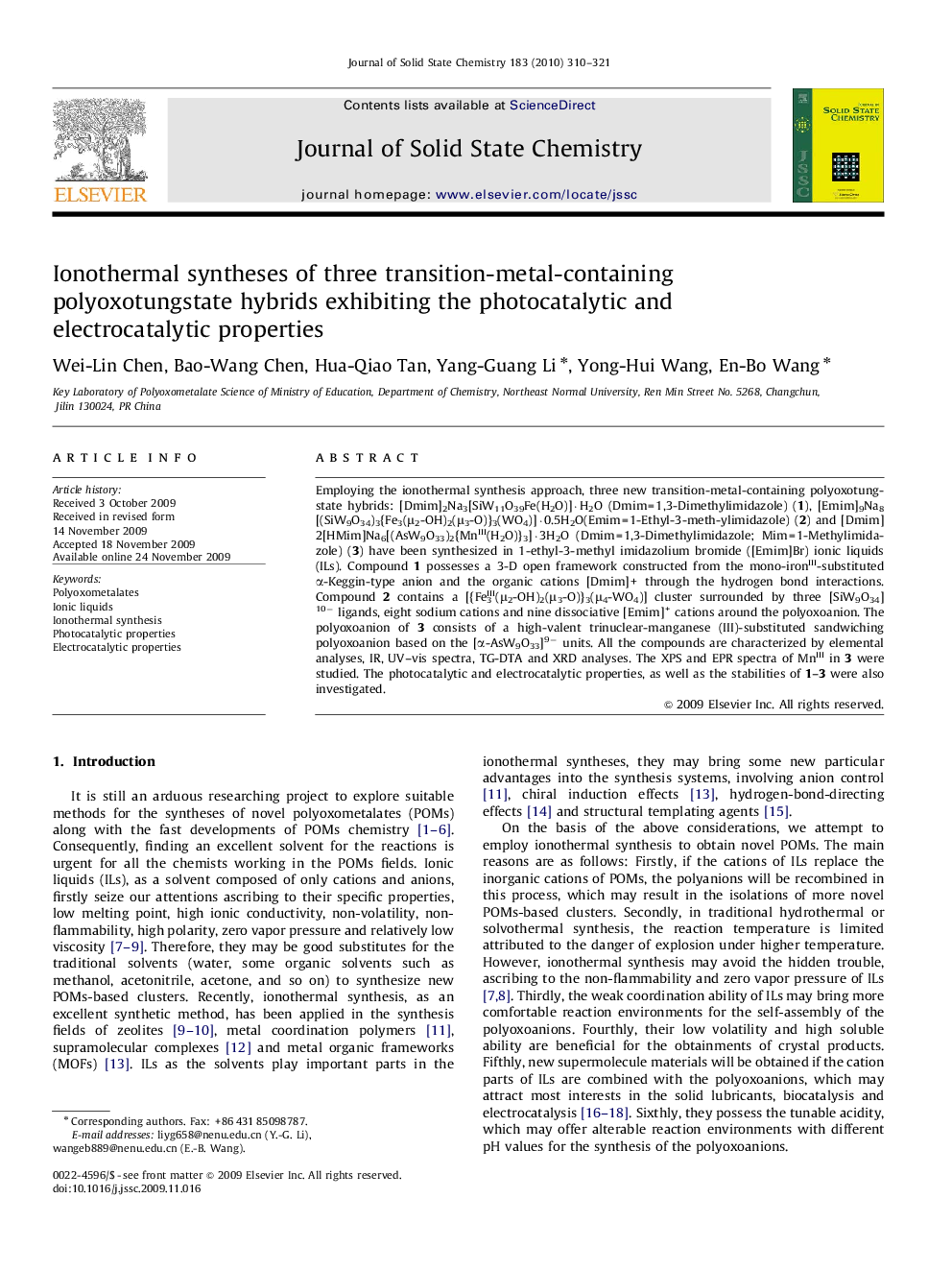| Article ID | Journal | Published Year | Pages | File Type |
|---|---|---|---|---|
| 1330867 | Journal of Solid State Chemistry | 2010 | 12 Pages |
Employing the ionothermal synthesis approach, three new transition-metal-containing polyoxotungstate hybrids: [Dmim]2Na3[SiW11O39Fe(H2O)]·H2O (Dmim=1,3-Dimethylimidazole) (1), [Emim]9Na8[(SiW9O34)3{Fe3(μ2-OH)2(μ3-O)}3(WO4)]·0.5H2O(Emim=1-Ethyl-3-meth-ylimidazole) (2) and [Dmim]2[HMim]Na6[(AsW9O33)2{MnIII(H2O)}3]·3H2O (Dmim=1,3-Dimethylimidazole; Mim=1-Methylimidazole) (3) have been synthesized in 1-ethyl-3-methyl imidazolium bromide ([Emim]Br) ionic liquids (ILs). Compound 1 possesses a 3-D open framework constructed from the mono-ironIII-substituted α-Keggin-type anion and the organic cations [Dmim]+ through the hydrogen bond interactions. Compound 2 contains a [{FeIII3(μ2-OH)2(μ3-O)}3(μ4-WO4)] cluster surrounded by three [SiW9O34]10− ligands, eight sodium cations and nine dissociative [Emim]+ cations around the polyoxoanion. The polyoxoanion of 3 consists of a high-valent trinuclear-manganese (III)-substituted sandwiching polyoxoanion based on the [α-AsW9O33]9− units. All the compounds are characterized by elemental analyses, IR, UV–vis spectra, TG-DTA and XRD analyses. The XPS and EPR spectra of MnIII in 3 were studied. The photocatalytic and electrocatalytic properties, as well as the stabilities of 1–3 were also investigated.
Graphical abstractThree new transition-metal-containing polyoxotungstate hybrids were synthesized successfully under the ionothermal condition, which proves that the ionothermal synthesis is a suitable synthetic method for different kinds of polyoxometalates.Figure optionsDownload full-size imageDownload as PowerPoint slide
